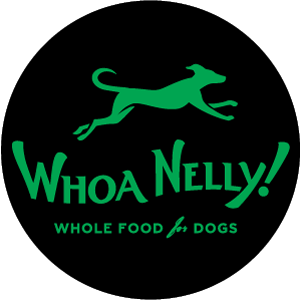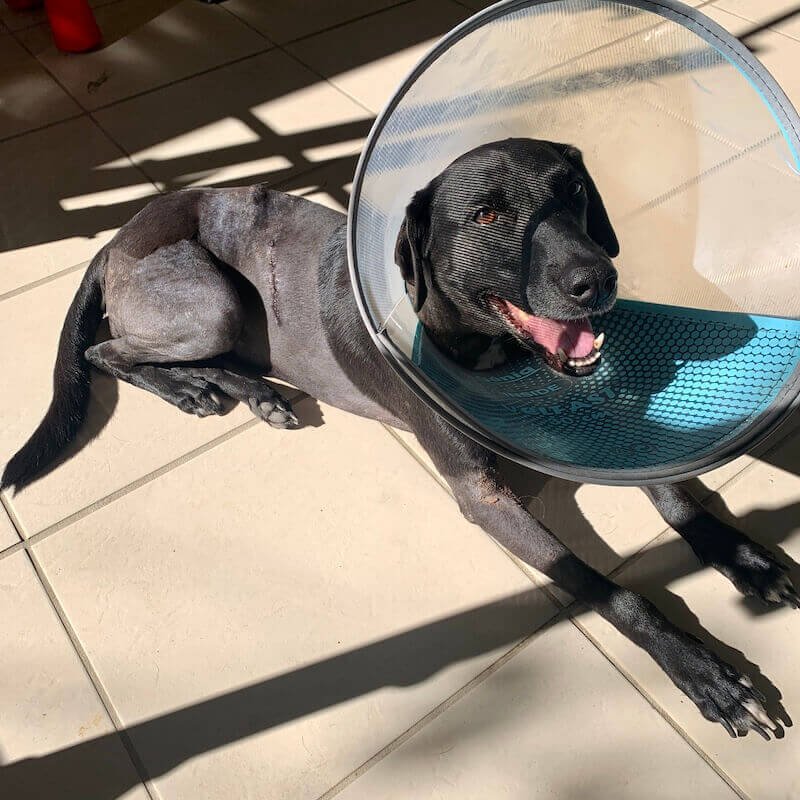Antibiotics: How To Help Your Dog Recover
In This Article
Nelly is finishing up over a month on antibiotics after a dog attack and several operations (update: she’s ok!). The antibiotics have been essential to her recovery from surgery, but they also cause serious side effects. Since most dogs have taken antibiotics we thought it would be helpful to look at how we approach antibiotic recovery.
What are antibiotics?
Antibiotics stop infections caused by bacteria. They work by killing pathogenic bacteria or preventing them from reproducing. Antibiotics were only discovered in the 1920s but they have had an enormous impact on treating infection - they are one of modern medicine’s greatest innovations.
While antibiotics kill pathogenic bacteria, a byproduct is that many other beneficial microbes are also depleted. This is because antibiotics generally do not target specific bacteria, and instead have an enormous effect on the entire microbiome.
For example, this study shows a significant negative change in microbiome composition after a course of metronidazole. The rebalancing of the microbiota can have profoundly negative effects on health and immunity, but there are things you can do to improve the situation.
Effect on the gut
The gut microbiota is vital for the proper functioning of your dogs body. In particular it affects their immune system - over 70% of immunity is linked to the gut! Antibiotics are incredibly powerful and broad spectrum, so their effects can be both positive and negative. Negative effects on the gut microbiota include reduced species diversity, altered metabolic activity, and promoting antibiotic resistant organisms.
Antibiotics can cause these symptoms:
Diarrhea
Vomiting
Nausea
Bloating
Abdominal pain
Loss of appetite
Yeast infection
When should antibiotics be used?
Unfortunately antibiotics are often overprescribed which creates antibiotic resistance - basically the bacteria become harder to kill. For this reason they should be used only when necessary. Typical reasons for prescription include ear infection, urinary tract infection, skin infection or recovery from surgery.
The key thing to remember is that antibiotics only treat bacterial infections, they do not affect viruses.
A good vet will only prescribe antibiotics for a specific reason and ideally know what bacteria they are targeting. This can be achieved by culturing the area of infection to determine the exact species of bacteria causing the issue. More specific antibiotics can then be used to target the pathogenic bacteria while reducing the effect on the other bacteria in the microbiotia.
Nelly’s vet was very proactive with culturing bacteria, so he knew exactly which antibiotic to give her to minimise the side effects. Very impressive!
How to help your dog recover
1. Give probiotics daily
Because antibiotics kill the bacteria in your dogs gut, it is really important to repopulate the microbiota with “good” bacteria. The best way to do this is to introduce probiotics to the diet on a daily basis. Probiotics are a safe way to support gut health, which impacts on nearly every aspect of your dogs overall health.
The probiotics work by preventing the growth of pathogenic bacteria, while stimulating your dogs immune system and maintaining the integrity of the epithelial barrier. The strains Lactobacillus, Saccharomyces, Bacillus, Bifidobacterium, and Enterococcus are commonly used for this purpose.
Probiotics are recommended to be used both during the course of antibiotics and in the recovery period after. Feed the probiotic 2 hours after the antibiotics to maximise their impact on your dogs gut. After the course of antibiotics, give your dogs probiotics for at least 2 weeks. Add the probiotics to your dogs food, and ideally feed twice a day for this period.
2. Add bone broth
In addition to probiotics, it’s also a great idea to feed your dog bone broth. Bone broth helps to repair the gut lining and reduce inflammation. It contains amino acids, collagen, gelatin, and trace minerals which all have a postive effect on your dogs gut. These nutrients often can’t be easily absorbed from your dogs food - especially if you are feeding processed dry food (yes even the expensive stuff) - so it’s a great way to support your dogs recovery.
It’s pretty easy to make bone broth at home, but it does take time. Here’s a good recipe. Otherwise you can buy it from a health or pet store. Just remember to check that it doesn’t contain onions which are toxic to dogs. I would also avoid garlic during the recovery period as it can be irritating to the gut.
3. Feed a low sugar diet
One very common result of taking antibiotics is a yeast infection. Yeast are always present on your dog’s skin, but the change in microbiota often allows them to grow excessively. This results in itchy ears and skin, red paws, and a sweet or musty smell.
Fighting a yeast infection is quite challenging. The probiotics and bone broth are helpful, but the biggest factor is diet. Because the yeast eat sugar to reproduce, removing carbohydrates from the diet is really the only effective way to stop their growth.
To avoid a yeast infection you need to feed a very low sugar diet. This means avoiding processed foods like kibble because they all contain high amounts of sugar.
Whoa Nelly! is 2-3% carb (from the veggies) so is an extremely low sugar diet.
4. Support the liver
The liver helps to metabolise antibiotics, so make sure to give it extra support during the recovery period. To do this make sure that your dog’s diet contains amino acids (protein), zinc and selenium.
If you are feeding a properly formulated raw diet like Whoa Nelly! then you are already doing this. If you are not sure, add some green lipped mussels or tinned oysters in spring water to your dogs dinner.
Which probiotic to use
It’s best to use a good quality powdered probiotic. Avoid giving capsules as they will not contain enough prebiotics and can have hydration issues when digested.
We use Entralive Maximal Plus as Nelly’s probiotic when she needs supplementation. This is a high potency probiotic with 50 billion viable cells per 5g. It contains Lactobacillus acidophilus, Bifidobacterium lactis, Lactobacillus rhamnosus and Saccharomyces boulardii strains, and enough prebiotic fibres to help feed them in the gut.
Recommended daily dose
Large dog: 1 teaspoon (5g)
Medium dog: 3/4 teaspoon (4g)
Smell dog: 1/2 teaspoon (3g)
This is a human grade probiotic so you can eat it too! You can order it online here.








